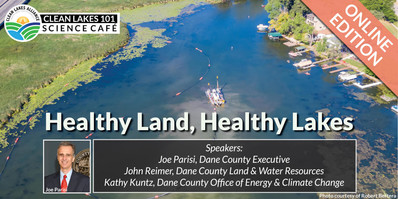
March 10, 8-9am (free)
Clean Lakes Alliance is hosting ane County Executive Joe Parisi and key staff members John Reimer and Kathy Kuntz as they review some of Dane County’s ongoing lake improvement initiatives in the Yahara Watershed. The Dane County Land and Water Resources Department leads and collaborates with organizations and agencies on innovative watershed scale approaches to improve water quality. These approaches vary in size and scope and include new technologies, research, and partnerships. Topics include:
Suck the Muck: Phosphorus concentrations in the stream sediments of Dorn Creek (northeast of Lake Mendota) are seven times greater than nearby crop fields. Much of the stream sediment is known as legacy sediment, deposits formed by erosion from farm fields accumulating over decades of farming. In the case of Dorn Creek, this sediment has existed since the late 1800s. For Lake Mendota, if the accrued legacy sediment remains at the bottom of the streams, it was calculated that it would take almost 100 years for the phosphorus to continue to leach out of the sediments and enter the lake. In order to reduce phosphorus concentrations and improve water quality decades sooner than 100 years, Dane County developed an innovative project to remove the phosphorus-laden sediment from the streambeds within the Yahara Watershed.
Yahara River Sediment Removal: Currently, water comes into the Yahara lakes faster than it goes out. Therefore, after repetitive and heavy rainfall events, the lake levels increase and can lead to flooding. The efficient movement of water through each lake is undermined by sediment build-up in the Yahara River. While sediment movement is a naturally occurring process, the accumulation of sediment in the Yahara River and lakes is greatly increased by human activity, including urban development and winter sand operations. Today, two inches of rain takes more than two weeks to leave the Yahara lakes system due to its sluggish nature.
Land Preservation: Dane County Parks has more than 12,000 acres of land that staff, volunteers, and partner organizations work to protect, improve, and restore. These restoration efforts include seed collection, controlled burns, forestry management, invasive species control, and land purchases.
Climate Change: In April 2020, Dane County issued an ambitious and comprehensive economy-wide climate action plan (CAP). The CAP lays out strategies for reducing greenhouse gas emissions from all sources by 50% by 2030 with the ultimate aim of net zero emissions by 2050. Benefits of achieving CAP objectives go beyond climate—many of the strategies outlined in the CAP also yield substantial benefits to our lakes.
Sector Team Updates
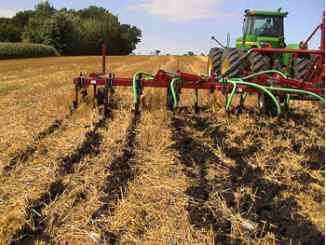
The next deadline for Conservation Stewardship Program (CSP) applications to be considered for funding this year is March 26, 2021. Through CSP, the U.S. Department of Agriculture’s Natural Resources Conservation Service (NRCS) helps farmers, ranchers and forest landowners earn payments for expanding conservation activities while maintaining agricultural production on their land. CSP also encourages adoption of new technologies and management techniques.
Gruenenfelder's Grazing Dairy
The Gruenenfelder family lives and farms in Moscow township in Iowa County, Wisconsin. Jason, Kris and their children Halle, Jaxon, Cal, Lydia and Cheyenne live in a valley overlooking rolling hills of southwest Wisconsin. Jason grew up on a dairy farm and has been running his own operation since graduating college. He milks his 90-cow herd once a day.
In September of 2018, Jason Gruenenfelder called the U.S.
Department of Agriculture’s Natural Resources Conservation
Service in Dodgeville with some questions about rotational
grazing. He had a conventional dairy farm and wanted to shift the way he did things. From that first conversation, it was clear that Jason’s goals for the farm extended beyond himself. Jason is very intentional about creating a farm that is enjoyable and safe for his whole family. Read more...
|

A Pennsylvania native, Addie fell in love with nature at a young age, spending hours building stick forts and exploring the woods behind her childhood home. In 2017, she earned a B.S. in Biology and Environmental Studies from St. Mary’s College of Maryland (AMCM). While at SMCM, she studied coastal ecology on the Chesapeake Bay and worked as an environmental educator and writing tutor. She also worked in turtle conservation and research in coastal New Jersey.
After graduating, Addie moved to Olympia, Washington, where she worked in land stewardship and volunteer coordination for the Nisqually Land Trust, a watershed-based non-profit organization. She particularly enjoyed working with volunteers from all walks of life and helping them get involved in monitoring and restoring special habitats around the watershed.
In her spare time, Addie enjoys hiking, making art, and playing music. She loves to garden and is always trying to get better at growing and preserving her own food.
Addie is excited to explore the Rock River Basin and get to know the Rock River Coalition’s members, volunteers, and partners. She is looking forward to diving into the water quality monitoring program and new aquatic invasive species program, and she is excited to help build community around these important issues impacting the Rock River area.
|
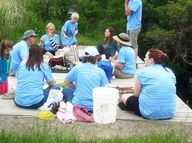
Wisconsin Water Week provides attendees with the opportunity to learn from respected experts, engage in discussion sessions and interactive workshops, and enhance their network of water-focused professionals. Anyone who loves water is invited to participate in Wisconsin Water Week, a virtual, interactive event occurring March 8-12, 2021. Attendees will have the opportunity to learn from respected experts, engage in discussion sessions and interactive workshops, and enhance their network of water-focused professionals. Join the event online from wherever you are for one day or the whole week using a computer, tablet, or smartphone. Read more...
|

The Department of Natural Resources (DNR) Interim Municipal Phosphorus Reduction Credit for Leaf Management Programs Guidance is now available for review and comment until Friday, March 5, 2021. The draft document can be found here: https://dnr.wisconsin.gov/topic/Stormwater/publications.html.
The Interim Municipal Phosphorus Reduction Credit for Leaf Management Programs Guidance is being updated to incorporate new research and address questions regarding programs that qualify for numeric credit.
Please provide comments on any language that needs to be clarified or any questions regarding implementation of this guidance. Comments related to this draft guidance document should be sent to: DNRGUIDANCEDOCUMENTS@wisconsin.gov.
Once the notice period is complete, all comments will be considered and responded to by the DNR. Revisions may be made to the document and the final updated guidance will then be made available to internal and external stakeholders. Thank you for taking the time to participate in this process.
The Wisconsin Pollutant Discharge Elimination System (WPDES) Recycling of Scrap and Waste Materials (WI-S058831-4) and Dismantling of Vehicles for Parts Selling and Salvage (WI-S059145-4) general permits are tentatively proposed to be reissued. The DNR will accept written comments until March 22, 2021. Comments may be submitted electronically to DNRSWPermits@wisconsin.gov or mailed to: Suzan Limberg – WT/3, Wisconsin DNR, 101 S. Webster St., P.O. Box 7921, Madison, WI 53707-7921.
The documents (Public Notice of Intent, draft permits and fact sheets) are available here: http://dnr.wi.gov/topic/Wastewater/PublicNotices.html.
Storm water discharges to waters of the state from certain industrial activities in these categories may be covered by the corresponding general permits. These proposed general permits contain requirements specified under ch. NR 216, Wis. Adm. Code. Chapter NR 216 states how storm water from industrial operations can be discharged so that waters of the state will be protected. These proposed general permits will apply to discharges to waters of the state throughout the state. Each permit specifies the specific contamination areas of concern for each type of industry and the corresponding compliance schedule required for implementing storm water pollution controls for those areas.
|

WDNR Wastewater Staff update the status of WPDES Wastewater Permits to track progress on permit issuance and TMDL Implementation. There were originally 81 WPDES wastewater permits included in the 2011 Rock River TMDL. Of these:
- 5 have been discontinued,
- 50 (63%) are in their 2nd 5-year term with TMDL limits,
- The remaining are in their 3rd, 4th, or 5th year of their 1st 5-year term with TMDL limits,
- 100% of permits have TMDL limits and are in TMDL implementation.
|
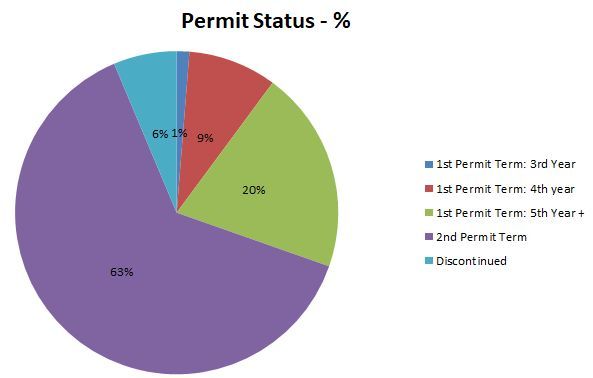 Implementation of TMDL limits via WPDES permits can take many forms, and frequently occurs as a combination of options (e.g. plant upgrade and optimization, combined with water quality trading). The options chosen by permit holders in the Rock River Basin, illustrated below, include:
- Adaptive Management (AM)
- Water Quality Trading (WQT)
- Individual Variance (IPV)
- Multi-Discharger Variance (MDV)
- Meeting TMDL Limits (e.g. optimization)
- No Limits (e.g. no discharge, land application, etc.)
- Undecided (facility is still in planning/optimization phase)
- Upgrade (facility meeting TMDL limits via upgrade)
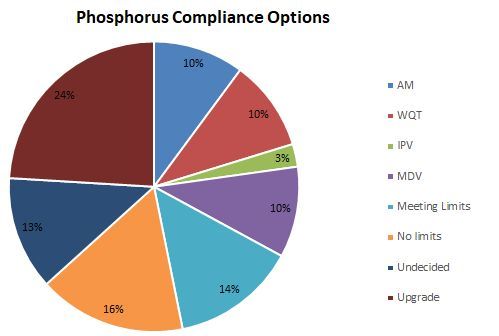

Do you have an innovative water quality improvement idea that you’d like to make happen this year, or do know someone else who does? Yahara WINS is seeking applicants for the 2021 Innovation Grant. The grant application, along with instructions can be found on the Yahara WINS website https://www.madsewer.org/Programs-Initiatives/Yahara-WINs under ‘Innovation Grants’ on the right side of the home page.
More information can be found in the press release.
|
|